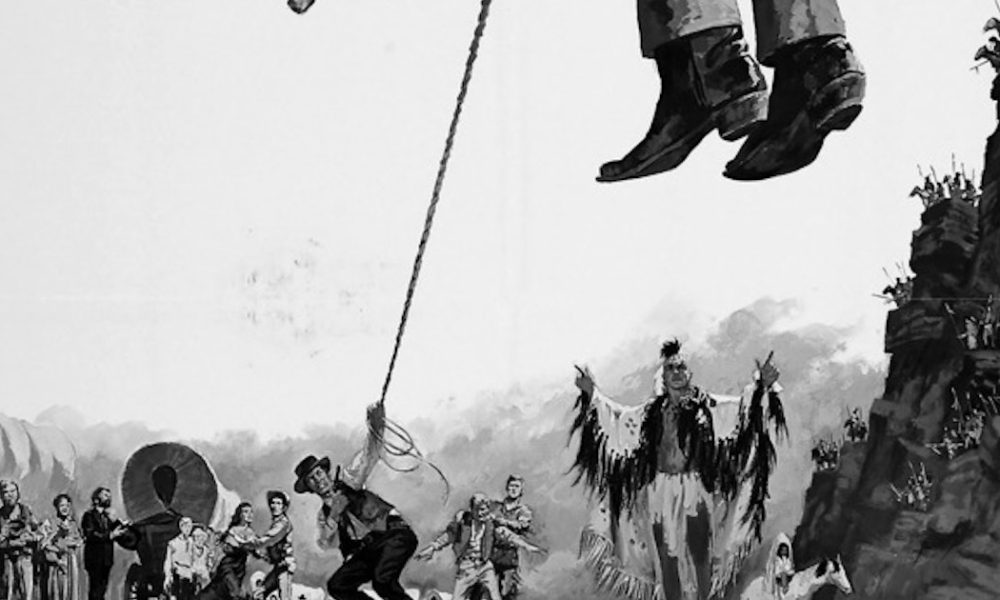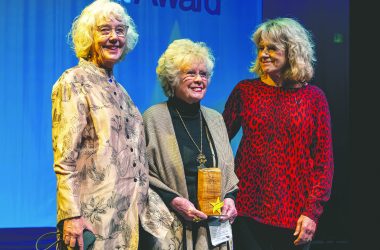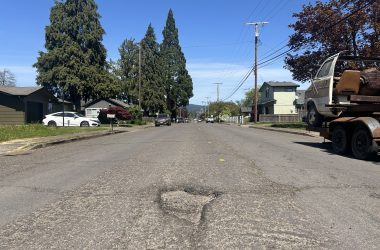 THE MOVIE POSTER FOR ”THE WAY WEST,” WHEN IT WAS RELEASED IN 1967. Image provided/United Artists
THE MOVIE POSTER FOR ”THE WAY WEST,” WHEN IT WAS RELEASED IN 1967. Image provided/United Artists
If you’ve never heard ”Harold Hecht’s ‘The Way West’” referenced as a legendary box-office bomb, that’s probably because of Michael Cimino.
Cimino’s epic testament to directorship run amok, a baroque five-and-a-half-hour Western picture titled ”Michael Cimino’s Heaven’s Gate,” was probably the most colossal box-office bomb of all time. Nothing else has ever come close – not even ”Ishtar.” It earned only 8 percent of its $44 million budget back (equivalent to $132 million today). It lost so much money it drove its studio, United Artists, out of business.
Maybe if United Artists had taken a closer look at one of its earlier box-office flops, it would have handled ”Heaven’s Gate” differently. Because the similarities between it and ”The Way West” are kind of striking.
Both were big-budget Westerns that aspired to get beyond the Golden West mythology and show the gritty reality of life of the old West. Both are branded with their creators’ names.
Of course, only one of those movies was over five hours long and included a 360-second-long shot of a guy playing a fiddle while roller skating through a massive frontier cowboy skating rink. So, maybe not.
”The Way West” was part of the wave of big-budget shot-on-scene Westerns that came out in the mid-1960s in response to the popularity of the ”Spaghetti Westerns” shot in Italy by directors like Sergio Leone. Leone and his colleagues brought a darker, more chaotic feel to a genre that many Americans had grown bored with after decades of little houses on the prairie, singin’ cowboys in big white hats and wholesome maidens in gingham.
So American movie makers started looking for darker, edgier stories to tell, and authentic places in which to shoot them.
Places like Eastern Oregon.
Director Andrew McLagen was familiar with the terrain. The previous year, he’d directed ”Shenandoah,” much of which was shot in Lane County. So when doing location scouting for this new Western, he had a good sense of where to look.
McLagen had a policy that all the actors had to be in costume and in character on the set at all times, which meant that when they weren’t performing for the camera they were halfway performing for visitors on the set; some of them found this exhausting, but it made for a movie-making spectacle that local residents would remember for the rest of their lives.
Shooting started out in 1966 near Eugene, where a set had been constructed to stand in as Independence, Mo., and a spectacular scene of a wagon train crossing the McKenzie River was filmed.
After spending about a million bucks shooting in Eugene, the company moved east, where they landed in southern Deschutes and northern Lake counties to drop a million and a half more. Oregon’s Fort Rock stood in for Independence Rock in Wyoming, much to the amusement of local raconteur Reub Long (”the Sage of Fort Rock”); and the Christmas Valley sand dunes stood in for the Western desert, much to the delight of real-estate hustler M. Penn Phillips, who was at this very time working to turn Christmas Valley into a cowboy paradise.
Then the whole huge caravan of cast and crew moved on, filming on Crooked River Ranch (which was, at the time, a working ranch; the TV commercials with Crooked River Bob and his cowboy-hat trick were about a decade in the future) and finishing up near Burns with a scene involving a buffalo stampede.
Then the crews headed back to Hollywood to put the film together.
As release day approached, the Eugene Jaycees were working with United Artists to host the world premiere screening of the movie in Eugene, slated for June 13. They hired a public-relations firm to get the word out, and were well into the project when to their dismay, the movie was released early. It screened in 21 theaters in New York City on May 24.
”To add to the Jaycees’ woes, the New York reviews of the film were all bad,” noted the writer of an AP article about the kerfuffle in the Oregonian the following Wednesday. ”The only thing anyone liked was the Oregon scenery.”
The reviews were, in fact, pretty bleak.
”It’s all very promising material, but Hecht and … McLaglen bury it in a panorama of scenery and stock Western clichés,” wrote Roger Ebert, whose two-and-a-half-star review was probably the gentlest one of the lot
The main issue for most critics was that the film tried to tell too many stories. The plot of the movie was, basically, a wagon train full of flawed characters of various types making their way across the country, experiencing interpersonal drama and physical hardships along the way. It’s hard for viewers to emotionally invest in all of them at the same time, and the film doesn’t make a particularly strong case for why they should.
The tendency among critics watching it for the first time seemed to have been to shrug their shoulders, look at their watches and count down the minutes until they could be back at the office writing a scathing takedown, possibly including the words ”worst,” ”Western,” ”movie” and ”ever.”
Of course, once the first few of these critical reviews came out, the general negativity started to influence others, in a classic ”information cascade.” Today, in the cold light of history many years later, the movie holds up pretty well. In 1967, in the hot blood of the moment, with the sheer momentum of the bad press feeding back into the coverage to influence more bad press, well … United Artists was in for a bumpy ride.
At the end of May, the Eugene Jaycees were gamely trying to put the best face they could on the ”world premiere” debacle.
”What we’ve got is a Pacific Northwest premiere, call it what you want to – but we have the first showing in this area,” Jaycees spokesman Jim Cisler told reporters.
But United Artists was not making things any easier for its erstwhile partners. In a press conference, studio representative Murry Lafayette emphatically declared that he was ”in no way, shape or manner prepared to make a statement” on the subject of the press conference he’d called, and added, less than helpfully, ”As far as I’m concerned, the less I know about it, the better I feel.”
He did, however, mention that Michael Witney, one of the supporting-role actors in the flick (he played the philandering newlywed Johnny Mack), would be there; and the three male leads would be ”represented” by Troy Donahue – who wasn’t actually in the movie at all. (Troy, as our younger readers may not recall, was a tall, handsome blond actor who had been one of the hottest sex symbols in the business about 10 years before this, but whose career had cooled considerably as a result of an ill-considered feud with studio mogul Jack Warner.)
Lafayette said producer Harold Hecht would be there, though – ”which,” the reporter adds, ”may be considered an act of bravery. Critics who have seen the film thus far have universally panned it.”
Bravery, or … or not. As the days passed, the brutality of the criticism of the movie mounted to the point that the United Artists people simply canceled the ”premiere,” leaving the Jaycees holding the bag, and slunk back to Hollywood to hide under their desks.
(Sources: ”The Way West (film),” an article published by Gregory P. Shine on April 9, 2018, in The Oregon Encyclopedia, oregonencyclopedia.org; archives of the Portland Oregonian, May and June 1967)
Finn J.D. John teaches at Oregon State University and writes about odd tidbits of Oregon history. For details, see http://finnjohn.com. To contact him or suggest a topic: [email protected] or 541-357-2222.








